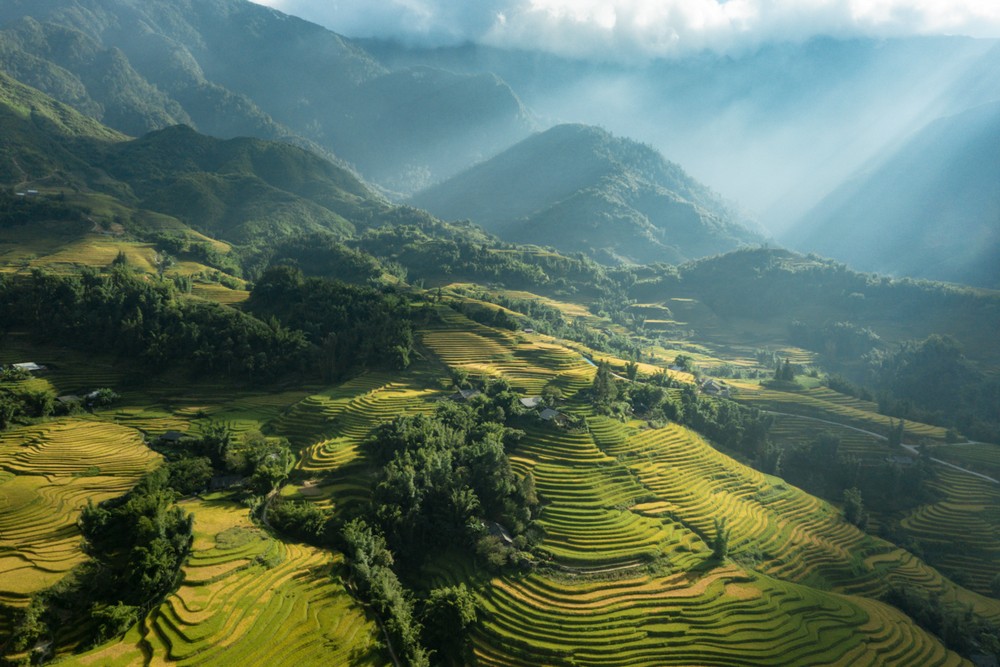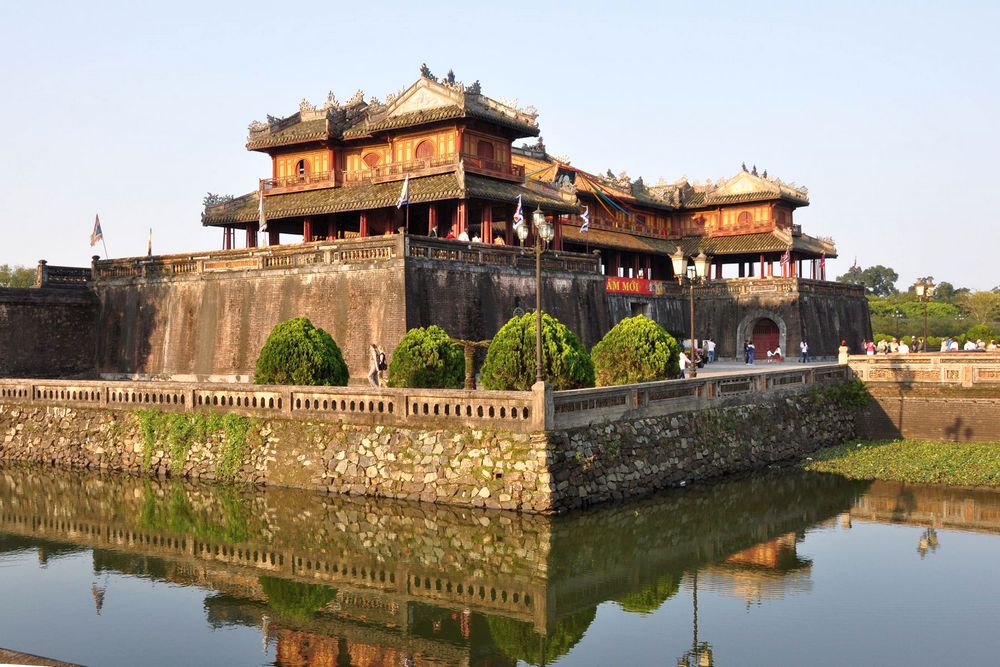Tour in Sapa Vietnam – Things you need to know
Sapa is a beautiful town located in the Lao Cai province of Vietnam. It is famous for its stunning landscapes and rich cultural diversity. Situated in the Hoang Lien Son mountain range, Sapa is known for its lush green rice terraces, cascading waterfalls, and misty valleys.
One of the major attractions in Sapa is trekking. The region offers numerous hiking and trekking trails that allow visitors to explore the picturesque countryside and interact with ethnic minority communities. The local hill tribes, such as the Hmong, Dao, Tay, and Giay, add to the cultural charm of Sapa.
Apart from trekking, visitors to Sapa can also indulge in other activities like visiting colorful local markets that showcase traditional handicrafts and local produce. The Love Market, held on Saturdays, is particularly famous. Sapa also serves as a base for those interested in climbing Vietnam’s highest peak, Mount Fansipan.
Overall, Sapa is a must-visit destination for nature lovers, adventure enthusiasts, and those interested in experiencing the rich cultural heritage of Vietnam’s ethnic minorities.

Y Linh Ho Village, Sapa
How to get to Sapa, Vietnam
To get to Sapa Vietnam, you can follow these general steps:
1. By Air: The nearest major airport is Hanoi’s Noi Bai International Airport. From your location, book a flight to Hanoi, Vietnam.
2. From Hanoi to Sapa: Once you arrive in Hanoi, you have a couple of options to travel to Sapa:
- Train: Take an overnight train from Hanoi to Lao Cai, which is the nearest railway station to Sapa. From Lao Cai, you can either take a bus or hire a taxi to Sapa, which is about a 1-hour drive away.
- Bus: Many bus companies operate direct routes from Hanoi to Sapa. The journey takes approximately 6-7 hours, depending on the traffic conditions.
- Private Car: If you prefer a more convenient and flexible option, you can hire a private car or a local driver to take you from Hanoi to Sapa. It offers more comfort and allows you to enjoy the scenic views along the way.
It’s always a good idea to research and plan your travel in advance, considering factors such as weather, transportation schedules, and personal preferences.
Best time to visit Sapa
The best time to visit Sapa, Vietnam is typically from March to May and September to November. During these months, the weather is generally mild, with pleasant temperatures and clear skies. The rice terraces are lush and vibrant in March and April, while September and October offer stunning autumn foliage. However, it’s worth noting that Sapa can be crowded during peak tourist seasons, so if you prefer quieter surroundings, it might be better to visit during the shoulder months.
What to see in Sapa?
Sapa, Vietnam is a beautiful destination with plenty of attractions to explore. Some of the top things to see and do in Sapa include:
1. Fansipan Mountain: Known as the “Roof of Indochina,” Fansipan is the highest peak in Vietnam. You can embark on a challenging trek or take a cable car ride to enjoy stunning views.
2. Rice Terraces: Sapa is famous for its terraced fields that form a scenic landscape. Rice terraces such as Muong Hoa Valley and Cat Cat Village offer incredible photo opportunities.
3. Cat Cat Village: This traditional H’mong village showcases the local culture and way of life. You can visit traditional houses, see handicrafts, and learn about the ethnic heritage.
4. Silver Waterfall: A picturesque waterfall located about 12 kilometers away from Sapa town. It’s a great spot for nature enthusiasts and photographers.
5. Love Waterfall: Situated deep in the forest, Love Waterfall offers a serene and romantic atmosphere. The trek to the waterfall is an adventure in itself.
6. Ham Rong Mountain: Explore Ham Rong Mountain and its beautiful gardens and colorful flowers. You can enjoy panoramic views of Sapa from the mountain’s summit.
7. Local Markets: Sapa hosts various markets where you can experience the vibrant local culture. The Bac Ha Sunday Market and Sapa Market are popular for shopping and trying local food.
8. Ta Phin Village: Known for its unique lifestyles and traditional Red Dao ethnic minority, Ta Phin Village provides an authentic cultural experience.
Remember to check the local weather conditions and plan your visit accordingly, as Sapa has a cool climate and can be foggy at times.
What to eat in Sapa?
Sapa, Vietnam is known for its unique cuisine that combines local flavors with influences from the ethnic minority groups in the region. Here are some popular dishes to try when visiting Sapa:
1. Thang Co: It is a traditional stew made from horse meat and organs cooked with various herbs and spices.
2. Salmon Hotpot: Sapa is famous for its freshwater fish, and a hotpot with fresh salmon is a popular choice here.
3. Bamboo Sticky Rice: This is a specialty dish in Sapa, where sticky rice is cooked inside bamboo tubes, giving it a distinct flavor.
4. Black Chicken: Sapa is well-known for its black chickens, which have a unique taste and are often used in soups or grilled dishes.
5. Grilled Sausages (Lap Xuong): These sausages are made with a combination of pork, garlic, and other spices, and they are often served with sticky rice.
6. Bitter Bamboo Shoot Soup: Made from fresh bamboo shoots, this soup has a slightly bitter taste and is usually cooked with pork or mushrooms.
7. Five-Color Sticky Rice: A colorful and delicious dessert made from sticky rice dyed with natural ingredients such as leaves and flowers.
Remember to explore the local markets and street food stalls in Sapa to discover more authentic and delightful dishes.
What to stay in Sapa, Vietnam?
Sapa, Vietnam is known for its beautiful landscapes and vibrant ethnic cultures. When considering accommodations in Sapa, you have a few options depending on your preferences and budget:
1. Sapa Town: This is the most convenient option as it offers a wide range of hotels, hostels, and homestays. You’ll have easy access to amenities, restaurants, and tour agencies.
2. Homestays in Ethnic Villages: For a more authentic experience, you can stay in a homestay in one of the ethnic minority villages surrounding Sapa. You’ll have a chance to immerse yourself in their culture and enjoy breathtaking views of terraced rice fields.
3. Resorts and Ecolodges: Sapa also has some luxurious resorts and ecolodges nestled in the mountains. These accommodations offer stunning views, spa facilities, and a tranquil environment.
Some popular accommodations in Sapa include Topas Ecolodge, Sapa Town Hotel, Aira Boutique Sapa Hotel, and numerous homestays in Ta Van, Cat Cat, and Lao Chai villages. Make sure to book your stay in advance, especially during peak tourist seasons.
Types of tourism in Sapa
Sapa, Vietnam is known for its diverse tourism offerings. Here are some popular types of tourism in Sapa:
1. Nature and Adventure Tourism: Sapa is famous for its stunning landscapes, lush rice terraces, and scenic mountains. Many tourists visit Sapa for trekking, hiking, and exploring the beautiful natural surroundings.
2. Cultural Tourism: Sapa is home to a rich diversity of ethnic minority groups, including Hmong, Dao, Tay, and Giay communities. Cultural tourism in Sapa allows visitors to immerse themselves in the local culture, traditions, and daily life of these ethnic groups.
3. Homestay Tourism: To experience an authentic local lifestyle, tourists often opt for homestay accommodations in Sapa. Homestays provide an opportunity to stay with local families, participate in their daily activities, and learn about their customs and traditions.
4. Photography and Sightseeing Tourism: Sapa offers breathtaking landscapes that attract many photography enthusiasts. From the iconic terraced fields to cascading waterfalls and mist-covered mountains, Sapa is a photographer’s paradise.
5. Wellness and Relaxation Tourism: Sapa is also becoming a popular destination for wellness seekers. The serene environment, fresh air, and natural hot springs in the area provide a peaceful atmosphere for relaxation and rejuvenation.
These are just a few examples, and there are more tourism options available in Sapa, Vietnam, depending on individual preferences and interests.
FAQs
1. Where is Sapa located in Vietnam?
Sapa is located in the northwest region of Vietnam, near the border with China.
2. How do I travel to Sapa?
The most common way to travel to Sapa is by overnight train from Hanoi. There are also buses and private cars available for transport.
3. What is the best time to visit Sapa?
The best time to visit Sapa is from March to May and from September to November when the weather is mild and comfortable. However, Sapa is known for its beautiful rice terraces, so if you want to see them in their full glory, it is recommended to visit from September to October.
4. What activities can I do in Sapa?
Popular activities in Sapa include trekking to the ethnic minority villages, visiting the local markets, exploring the stunning rice terraces, and enjoying the scenic landscapes. You can also participate in homestays with local families to experience their culture and way of life.
5. Do I need a guide for trekking in Sapa?
It is highly recommended to hire a local guide for trekking in Sapa. They can provide valuable insights into the local culture, guide you through the best routes, and ensure your safety.
6. What should I pack for a trip to Sapa?
It is important to pack comfortable trekking shoes, warm clothing, rain gear, sunscreen, a hat, insect repellent, and a day bag for your essentials. Sapa’s weather can be unpredictable, so it’s better to be prepared for any conditions.
7. Is it safe to drink tap water in Sapa?
It is not recommended to drink tap water in Sapa. It is safer to drink bottled or filtered water to avoid any potential health issues.
8. Can I use credit cards in Sapa?
While some hotels and restaurants in Sapa accept credit cards, it is advisable to carry enough cash, especially when visiting local markets or smaller establishments.
9. Are there any cultural norms or rules to follow in Sapa?
Visitors to Sapa are expected to respect the local culture and traditions. It is important to dress modestly when visiting ethnic minority villages and to ask for permission before taking photographs of local people.
10. What souvenirs can I buy in Sapa?
You can buy traditional handmade crafts, clothing, bags, blankets, and other textiles, as well as local agricultural products such as tea, honey, and mushrooms as souvenirs in Sapa.




